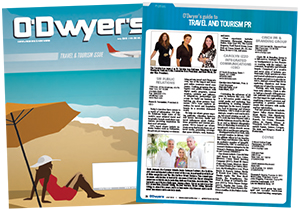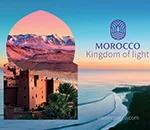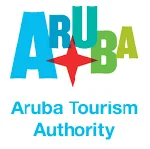 Lou Hammond Lou Hammond |
To clarify: travel influencers have been around forever, only in a more offline capacity until the emergence of the Internet in the mid ’90s.
|
|
In the ’60s, long before Netflix or streaming, the Sound of Music drove an influx of visitors to Austria. In the ’70s, there was no talk of “online influencers,” no blogs to read or articles you could Google. Yet, Travel & Leisure convinced readers that “a new family resort in the backwater of Orlando, Florida” was a must-see destination. Legendary rocker Jim Morrison lived out his entire life long before the idea of YouTube was even fathomable, yet his burial place in Père Lachaise Cemetery has more than 4,000 reviews on TripAdvisor and a TripAdvisor Certificate of Excellence. Travel influencers have been around since the second century of the Christian Era, beginning with the Greek travel writer Puasanias, but the emergence of the digital channel has evened the playing field and changed the game entirely.
Social media is no longer a novelty for brands, destination marketers or PR teams. Instead, social media and influencers have become a necessity to successful marketing and public relations initiatives. A cohesive strategy that involves online influencers and offline engagement is not as tricky as it may sound. Again, we revert back to our traditional understanding of marketing and human beings — get people talking. Sure, there’s less face-to-face contact these days with people hiding behind their phones in the subway, at the dinner table or in elevators, but word of mouth (you may know it as WOM) still rings true as one of the most effective ways to market a brand. All to say, it’s worthwhile to invest the time in identifying quality influencers and establishing relationships with them to bring them into the conversation surrounding your brand.
With the continued emergence of new social media platforms (e.g., Snapchat, Kik and WhatsApp) and the sheer dependency we have developed globally on the Internet, influencer engagement has grown from just a buzzword to a full-blown strategy. When tapped strategically, it has the potential to influence an audience so large, yet so finitely identified and targeted, that it creates not only awareness but also forges long-lasting advocacy and meaningful relationships.
So, as a brand or a destination, how do you tap into this ever-flowing fountain of influence? You go back to the basics. According to Johnny Jet, founder of JohnnyJet.com and a travel influencer, it’s all about establishing the foundation for a long-term relationship and understanding your audience.
“It’s important for destinations to understand that meaningful influence takes time,” said Johnny Jet. “Often, brands don’t see beyond just a single event or sponsored post. Forge long term relationships with influencers so the conversation can continue well beyond a single promised blog or Instagram post.”
The effect of a long-term, organically built relationship far supersedes that of a quick one-time post for a lot of Likes. So often we attack a content strategy as “What do we need to tell them?” rather than “What do they want to hear?”
Travel influencers are often considered destination trend-setters. They tend to have a creative edge to their content coloring outside the lines to turn otherwise generic content into the next must-go spot on the map. According to Johnny Jet, brands should take a similar “outside the lines” approach when working with influencers. Invite a group of foodie influencers to your travel destination and wow them with a creative take on a savory meal. What Wolfgang Puck did for the Los Angeles restaurant scene has grown into what he’s done for the city as a whole. While hosting foodie influencers at your travel destination can help you reach an entirely different audience for an entirely different reason, it still benefits your overall brand. It simply segments your brand into its component parts to reach a potential new online audience you may have previously been missing.
How do you spot these globe-trotting influencers? Turns out, if they’re the real deal, you’ll know it … and not by the number of followers they have, but by the quality of followers they have. With so many spam accounts and purchased followers these days almost anyone can buy a decent following. If we base influence simply on the number of followers, that’s saying anyone can start an account, purchase a few hundred thousand followers or Likes and voila, they’re influential. Johnny Jet says, “Not so fast. If someone only has 20 followers but those followers include National Geographic, Condé Nast Traveler and BBC Travel, that person is going to mean more to a destination than someone with 10,000 spam followers.”
Influencers like Johnny Jet are the golden eggs. They have the numbers brands want and the quality to match. Each one of Johnny Jet’s 86,000 Twitter followers chose to follow him for a reason at some point in the last eight years. That is 86,000 people who want to know where he’s traveling and what he has to say about it when he gets back. Ladies and gentlemen, it does not get more influential than that. We don’t know where this is going in another decade, but today online/offline influencer marketing is the path to success.
***
Lou Hammond is Founder and Chairman of Lou Hammond Group.



 Weber Shandwick is providing PR and marketing communications services to the Moroccan National Tourist Office in New York.
Weber Shandwick is providing PR and marketing communications services to the Moroccan National Tourist Office in New York. Finn Partners has filed its six-month contract with the Bahamas Ministry of Tourism, Investments & Aviation, which is worth $240K.
Finn Partners has filed its six-month contract with the Bahamas Ministry of Tourism, Investments & Aviation, which is worth $240K. Weber Shandwick wrapped up its work for the Ministry of Bahamas at the end of 2023.
Weber Shandwick wrapped up its work for the Ministry of Bahamas at the end of 2023. The Aruba Tourism Authority is boosting its budget 29.4 percent to $2.2M at Zeno Group, according to its 2024 contract, effective Jan. 1.
The Aruba Tourism Authority is boosting its budget 29.4 percent to $2.2M at Zeno Group, according to its 2024 contract, effective Jan. 1. As inflation continues to impact spending, consumers are revisiting their list of what they’re willing to spend more of their money on. Luckily for those in the travel industry, experiences seem to be trending up on the “splurge” list.
As inflation continues to impact spending, consumers are revisiting their list of what they’re willing to spend more of their money on. Luckily for those in the travel industry, experiences seem to be trending up on the “splurge” list. 


 Have a comment? Send it to
Have a comment? Send it to 
No comments have been submitted for this story yet.